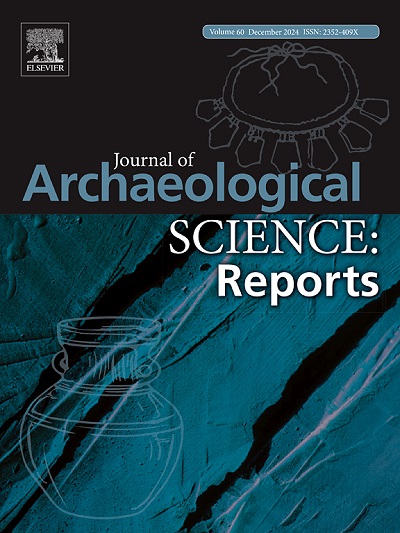Storage story: Investigating food surplus and agricultural methods in Late Ubaid Gurga Chiya (Iraqi Kurdistan)
IF 1.5
2区 历史学
0 ARCHAEOLOGY
引用次数: 0
Abstract
The world’s earliest documented transition from village to urban life took place in Mesopotamia during the fourth millennium BCE. In order to recognize the steps leading to this process, archaeologists have long focused on the development of village life in the preceding ‘Ubaid period, corresponding broadly to the 5th millennium BCE. Our research aims to contribute to this ongoing process by presenting new evidence pertaining to changes in agricultural methods and the organization of food surplus from a site of the Late ‘Ubaid period called Gurga Chiya, located in the Sharizor Plain of Iraqi Kurdistan. Excavation of the mid to late 5th millennium BCE sequence at Gurga Chiya led to the discovery of an architectural complex with partially preserved pisé walls, most likely corresponding to a “tripartite” form of domestic building that appears widely characteristic of contemporaneous sites elsewhere in the Southwest Asia, from southeastern Turkey to central Iraq. One of the preserved rooms appears to have been used as a storage area for plant-based foods, as indicated by dense deposits of archaeobotanical remains, especially lentils and cereals. In this paper, we combine archaeological, architectural and archaeobotanical analysis to investigate the relationship between food storage and domestic economy at Gurga Chiya. These methods are supplemented by stable isotope analysis of Δ13C and δ15N values from preserved grains at Gurga Chiya and from the adjacent, Late Neolithic site Tepe Marani, and provides a diachronic perspective on changes in the methods used for cultivating crops. The limited data acquired from Tepe Marani and Gurga Chiya seem consistent with a gradual shift towards lower inputs per unit area – thus more extensive cultivation regimes – over time.
储存故事:调查乌拜德古尔加奇亚晚期(伊拉克库尔德斯坦)的粮食过剩和农业方法
公元前四千年,美索不达米亚出现了世界上最早的从乡村向城市生活过渡的文献记载。为了了解这一过程的发展步骤,考古学家长期以来一直关注乌拜德时期(大致相当于公元前五千年)之前的村落生活发展。我们的研究旨在通过展示位于伊拉克库尔德斯坦沙里佐尔平原的一处乌拜德晚期遗址中有关农业方法变化和食物剩余组织的新证据,为这一正在进行的进程做出贡献。对古尔加奇亚公元前五千年中后期序列的发掘,发现了一处建筑群,其部分墙体保存完好,很可能是一种 "三方 "形式的家庭建筑,这种形式在从土耳其东南部到伊拉克中部的西南亚其他地区的同时代遗址中广泛存在。其中一个保存完好的房间似乎被用作储存植物性食物的地方,这一点可以从密集的考古植物遗骸(尤其是扁豆和谷物)的沉积中看出。在本文中,我们结合考古、建筑和考古植物学分析,研究了古尔加奇亚的食物储藏与家庭经济之间的关系。这些方法通过对 Gurga Chiya 和邻近的新石器时代晚期遗址 Tepe Marani 保存谷物的 Δ13C 和 Δ15N 值进行稳定同位素分析得到了补充,并提供了一个关于作物栽培方法变化的非同步视角。从 Tepe Marani 和 Gurga Chiya 获取的有限数据似乎表明,随着时间的推移,单位面积的投入逐渐减少,因此耕作制度更加广泛。
本文章由计算机程序翻译,如有差异,请以英文原文为准。
求助全文
约1分钟内获得全文
求助全文
来源期刊

Journal of Archaeological Science-Reports
ARCHAEOLOGY-
CiteScore
3.10
自引率
12.50%
发文量
405
期刊介绍:
Journal of Archaeological Science: Reports is aimed at archaeologists and scientists engaged with the application of scientific techniques and methodologies to all areas of archaeology. The journal focuses on the results of the application of scientific methods to archaeological problems and debates. It will provide a forum for reviews and scientific debate of issues in scientific archaeology and their impact in the wider subject. Journal of Archaeological Science: Reports will publish papers of excellent archaeological science, with regional or wider interest. This will include case studies, reviews and short papers where an established scientific technique sheds light on archaeological questions and debates.
 求助内容:
求助内容: 应助结果提醒方式:
应助结果提醒方式:


